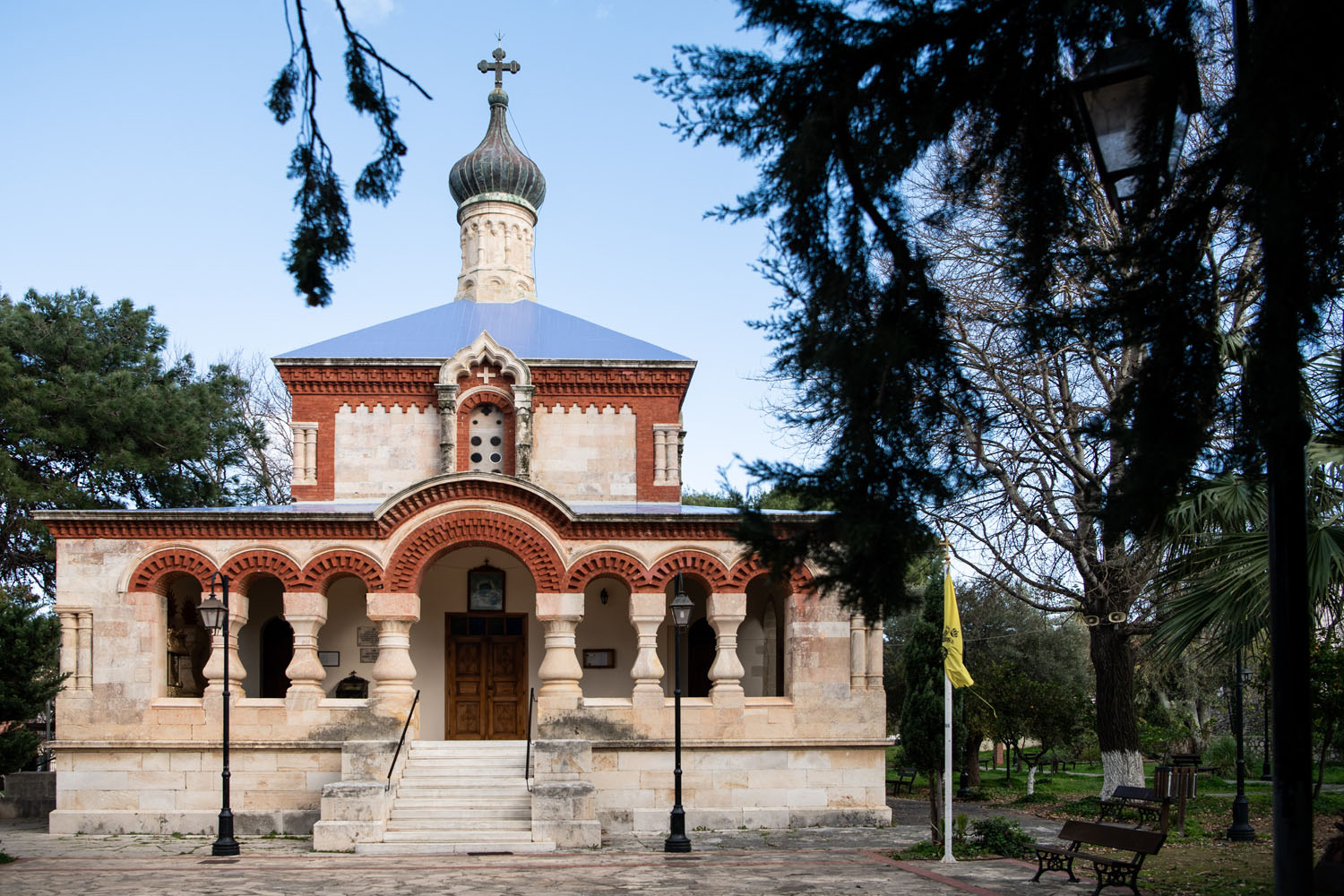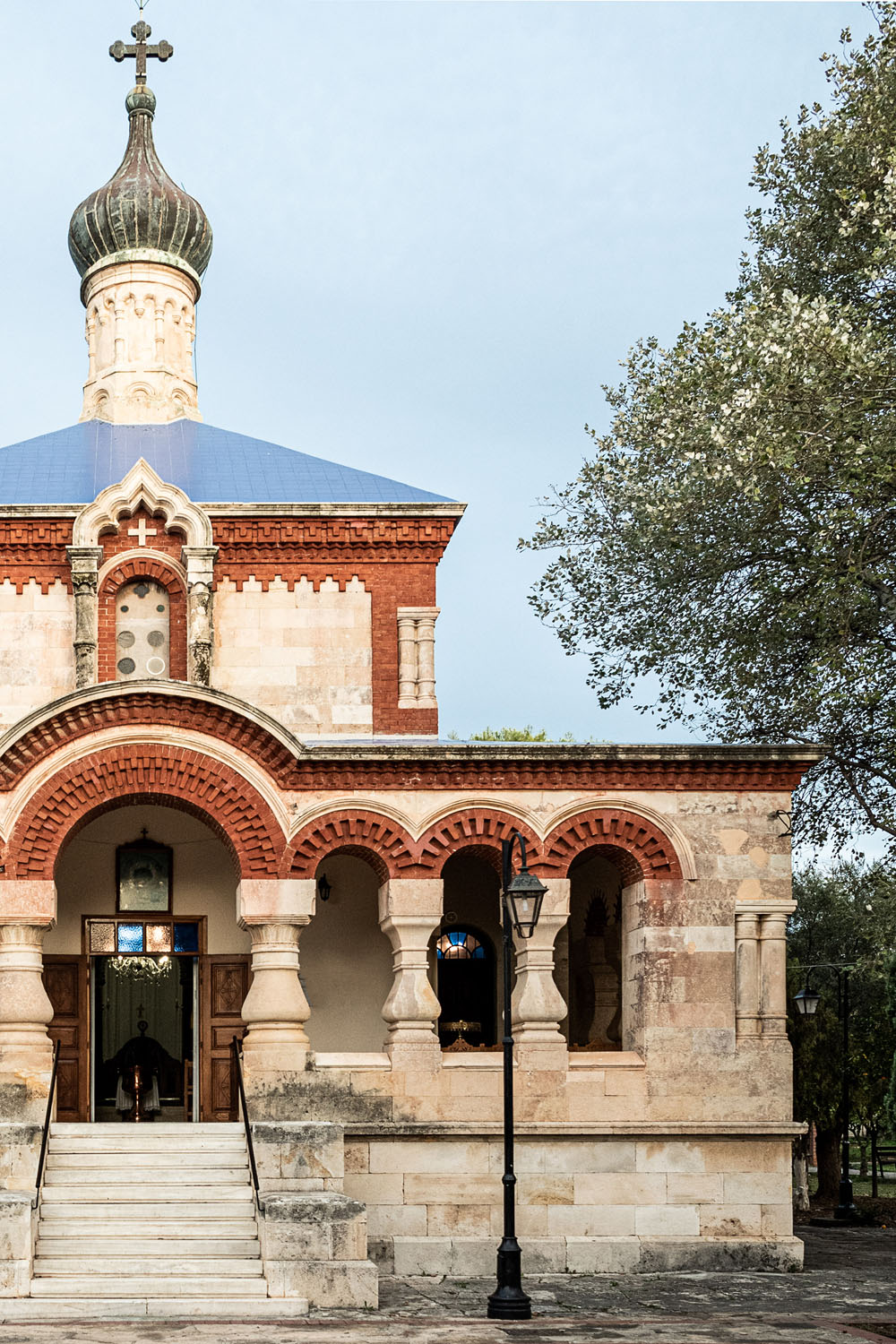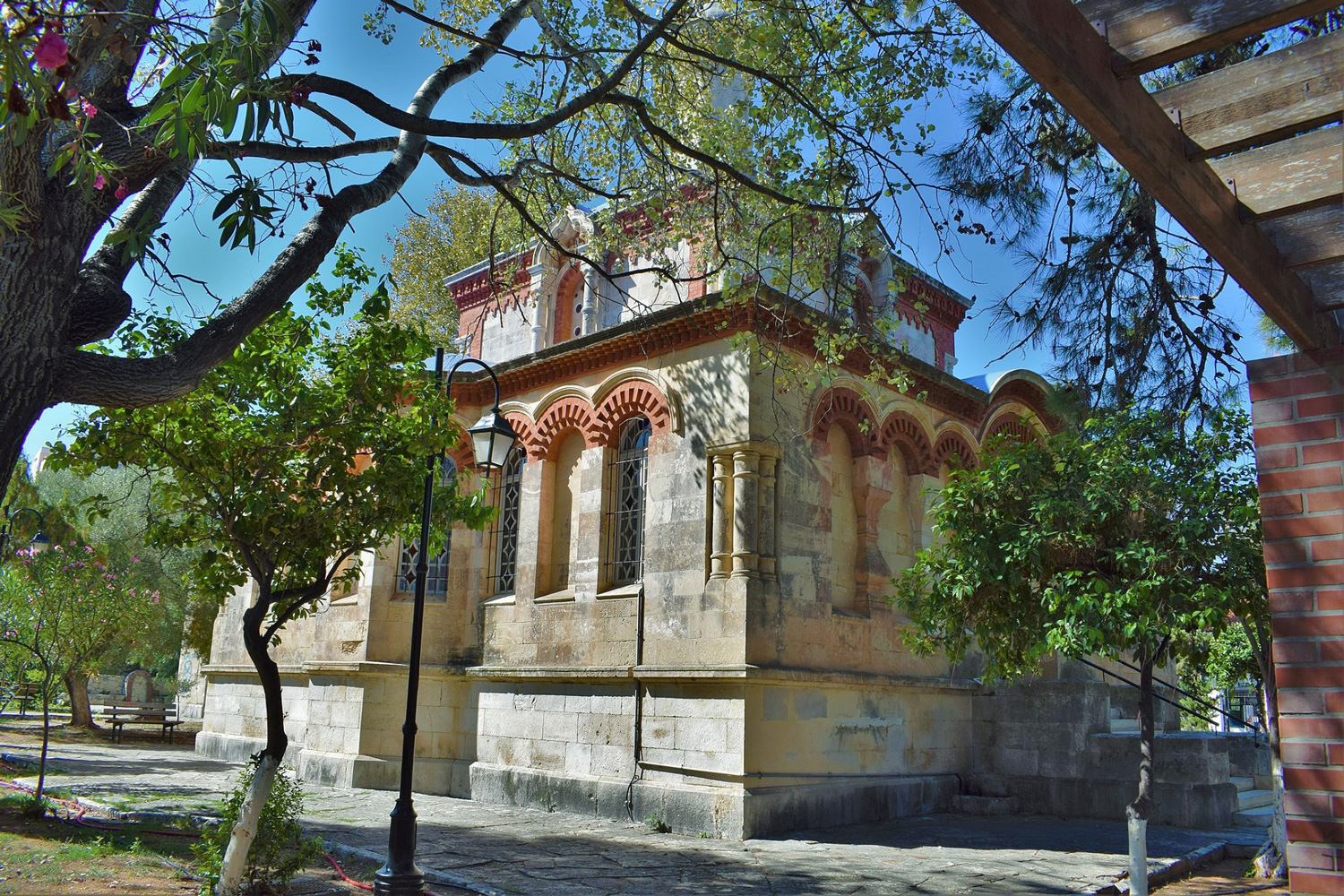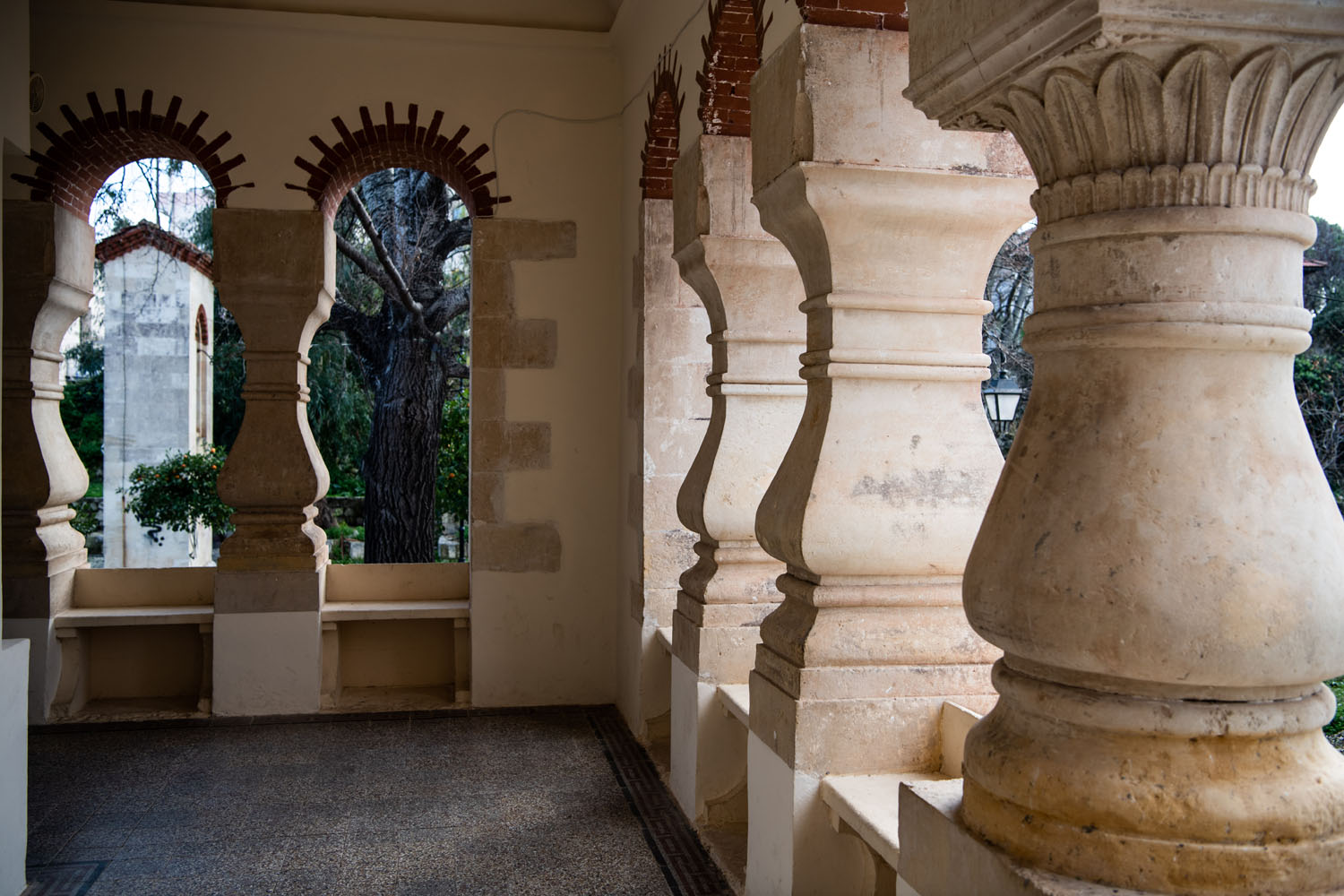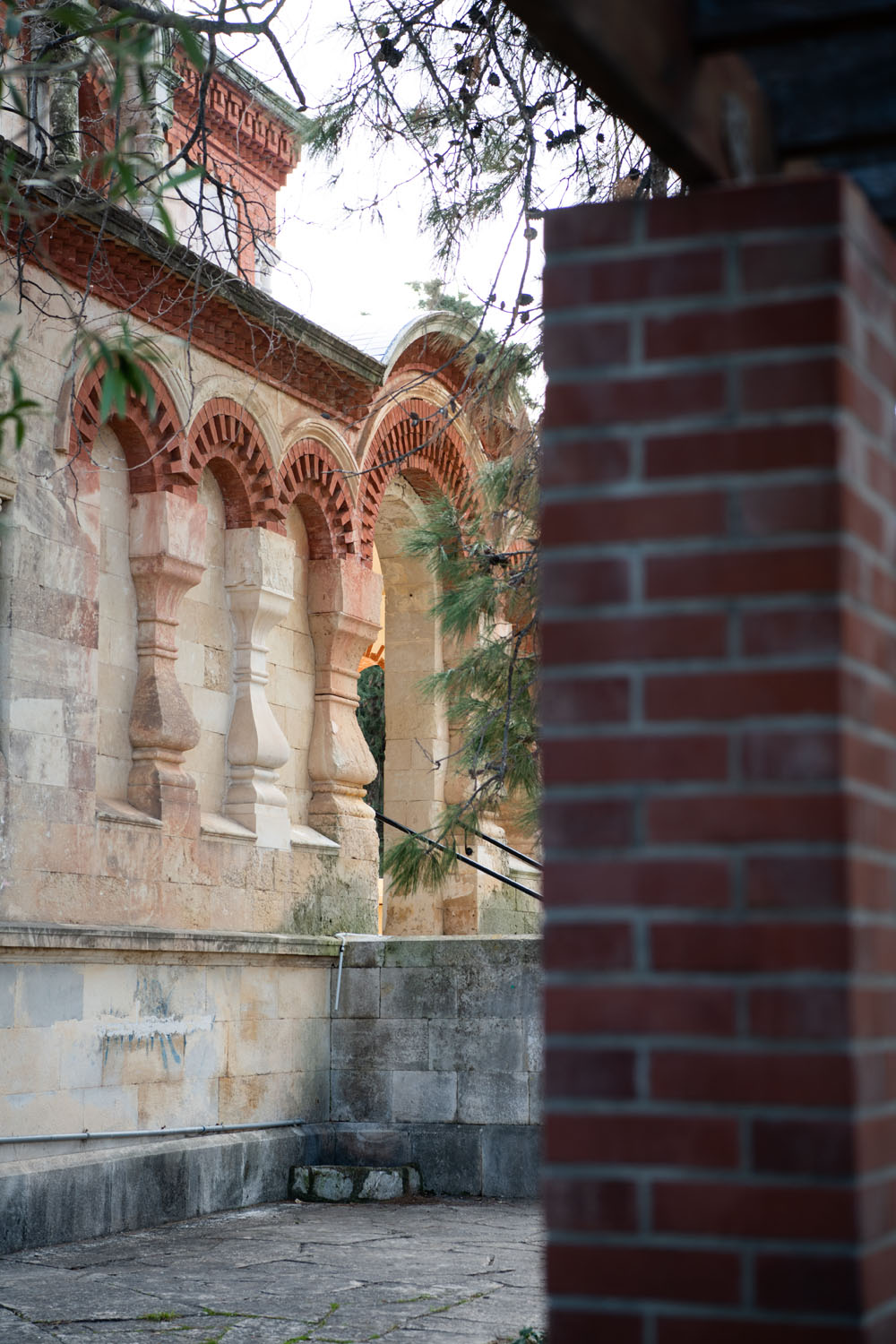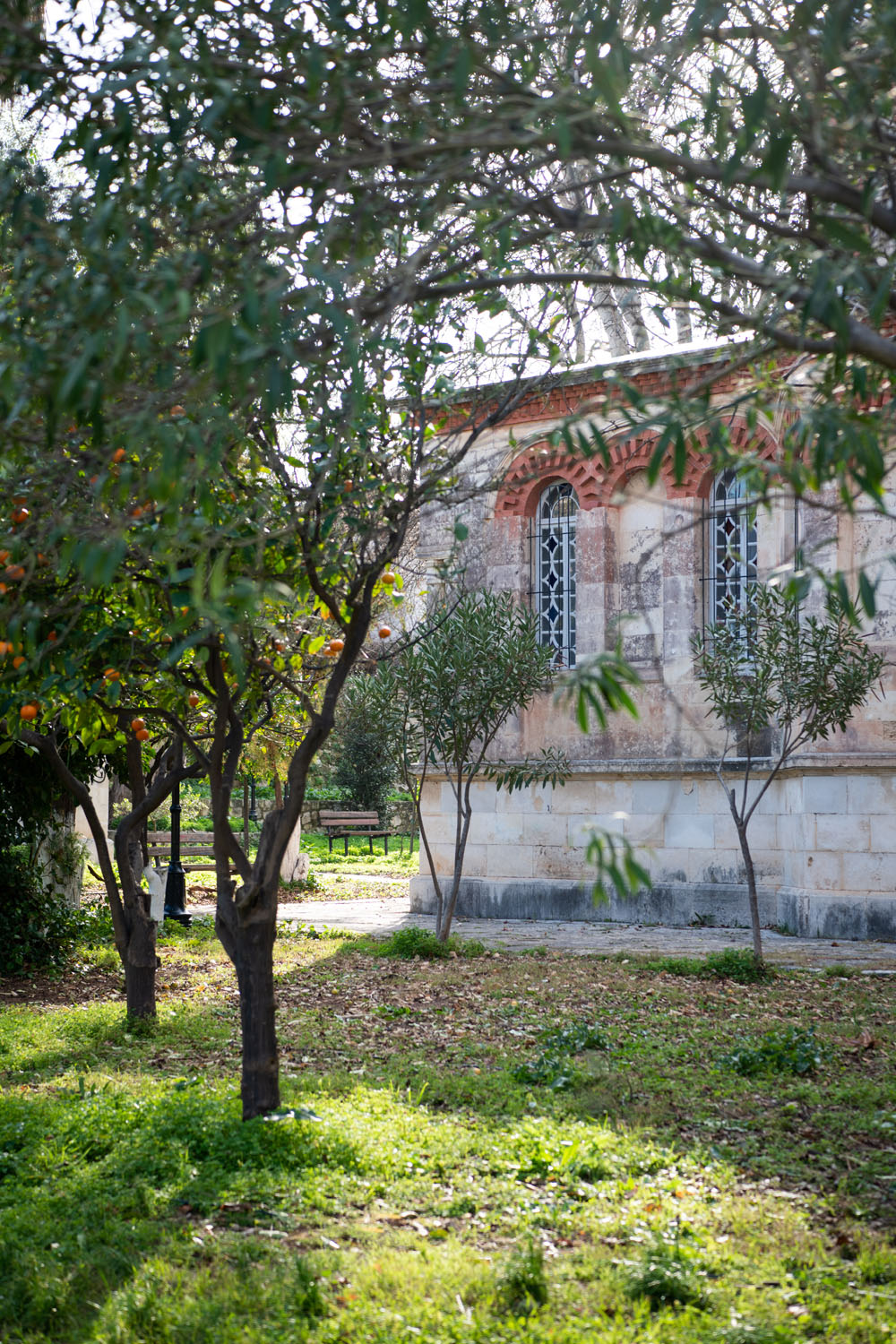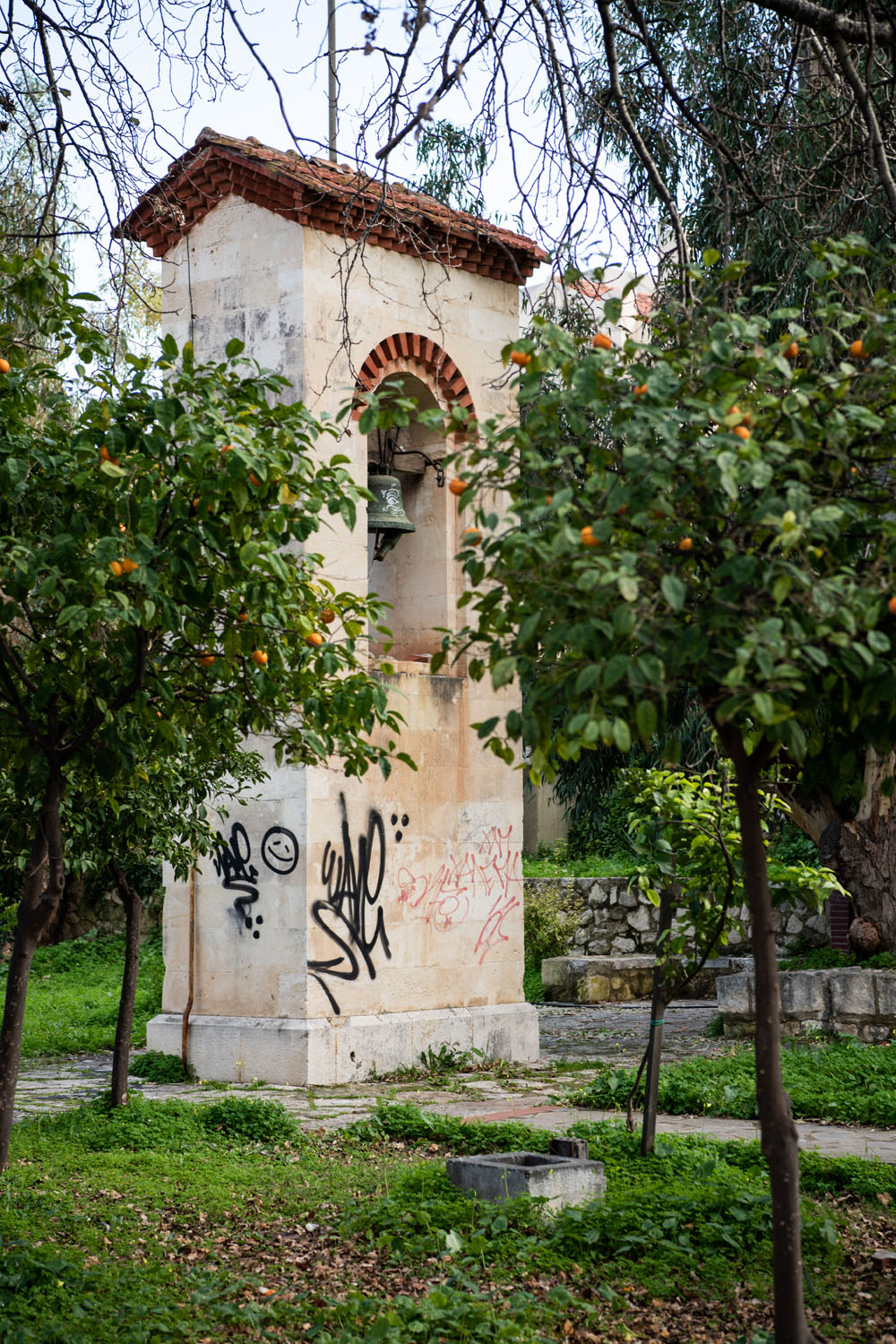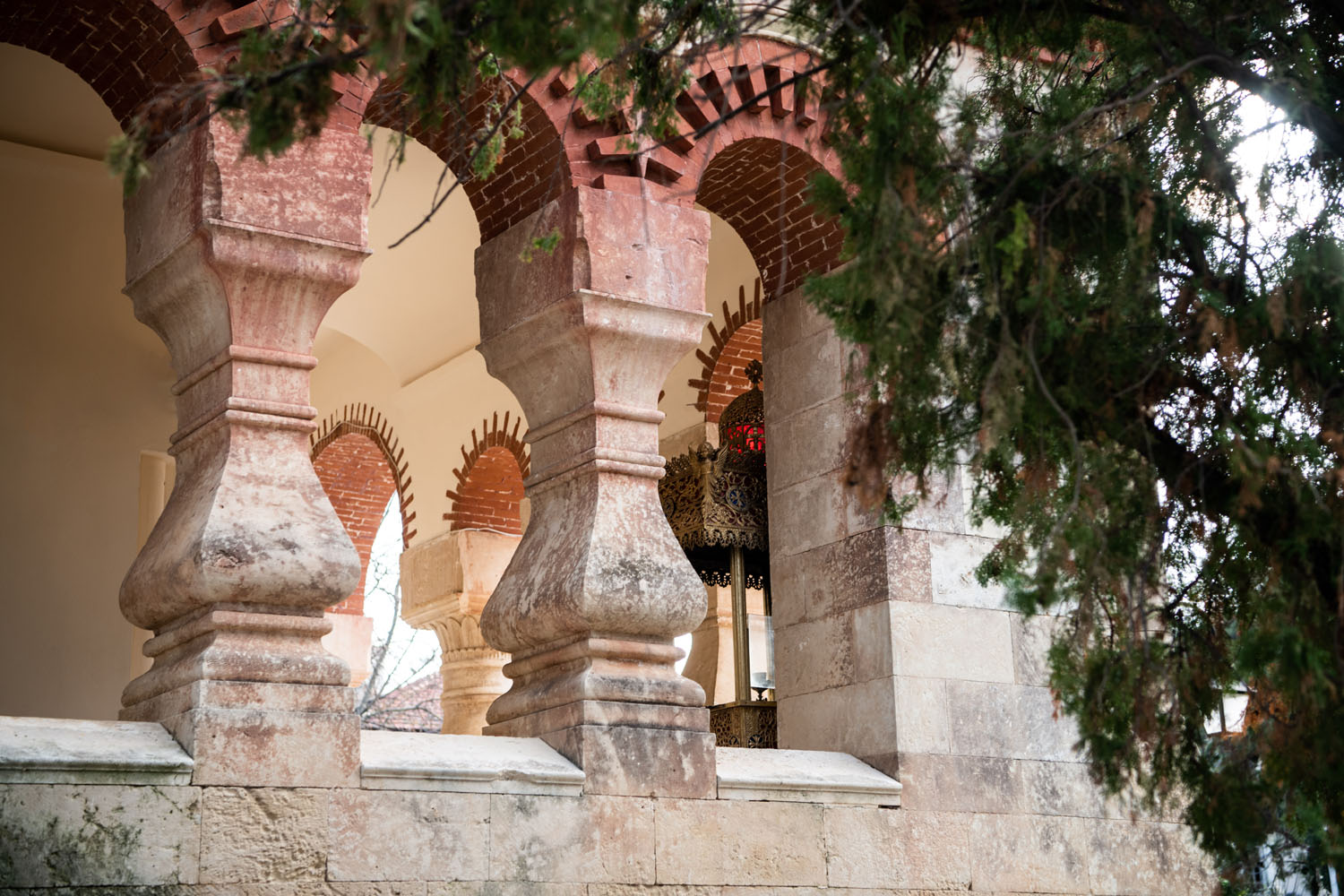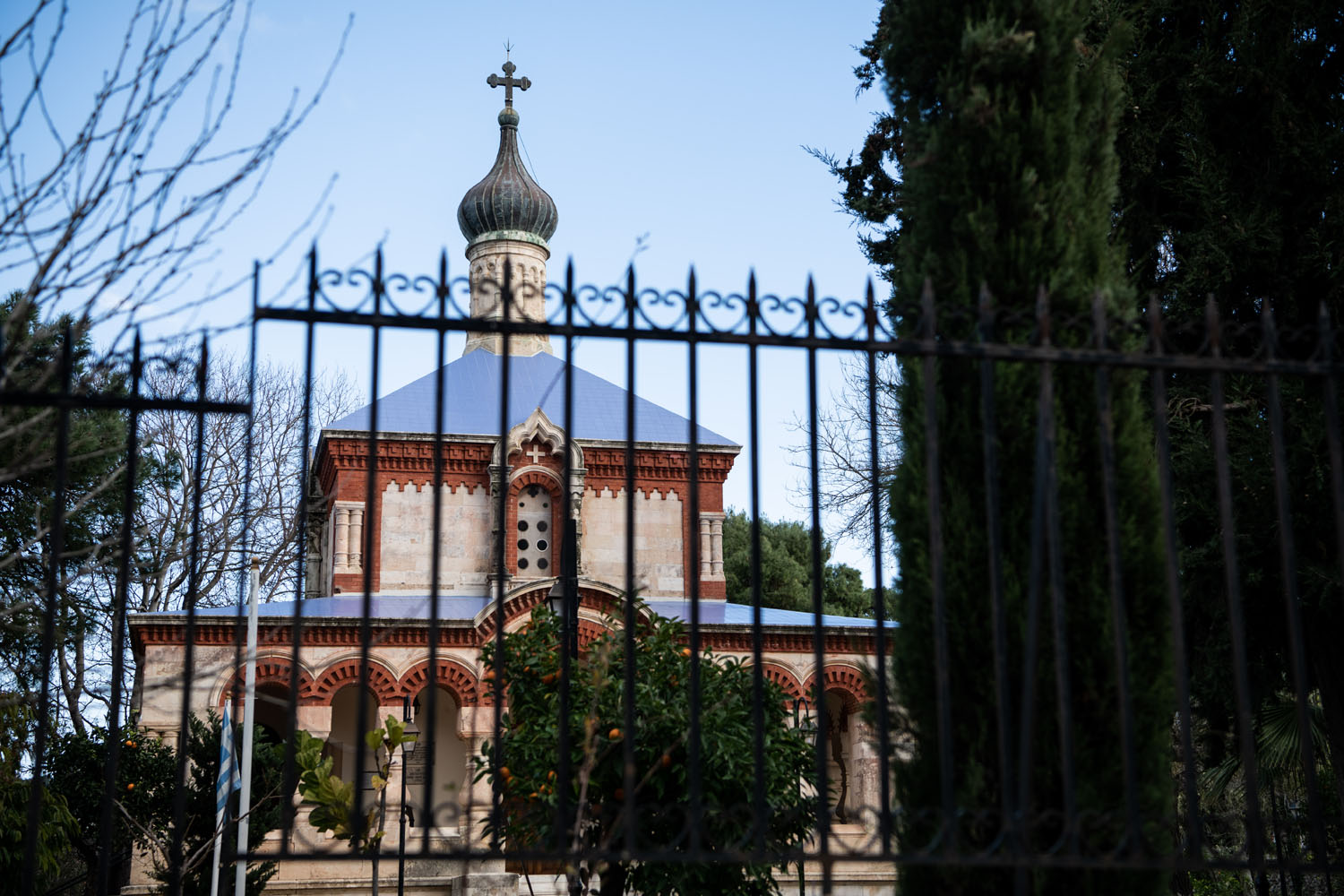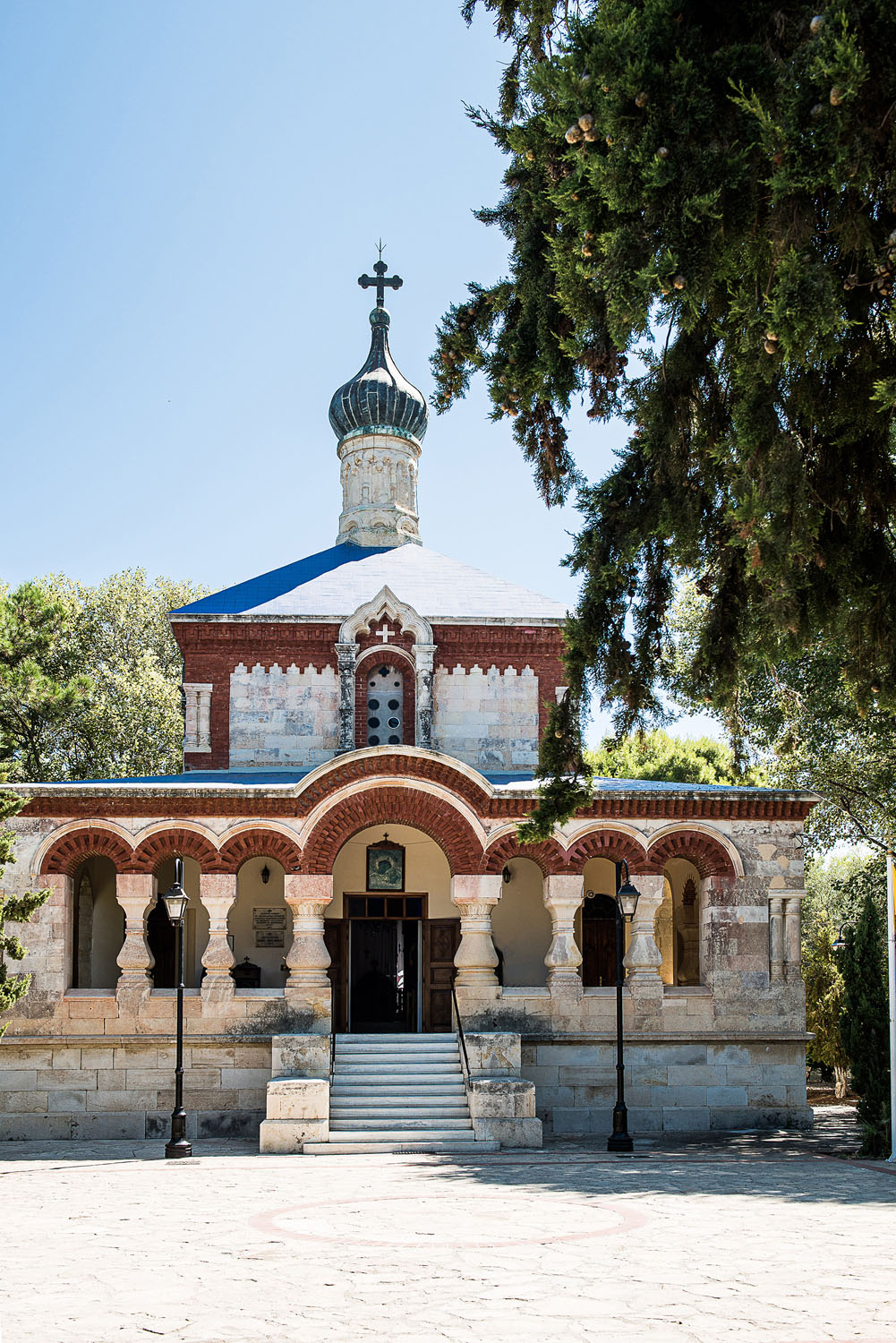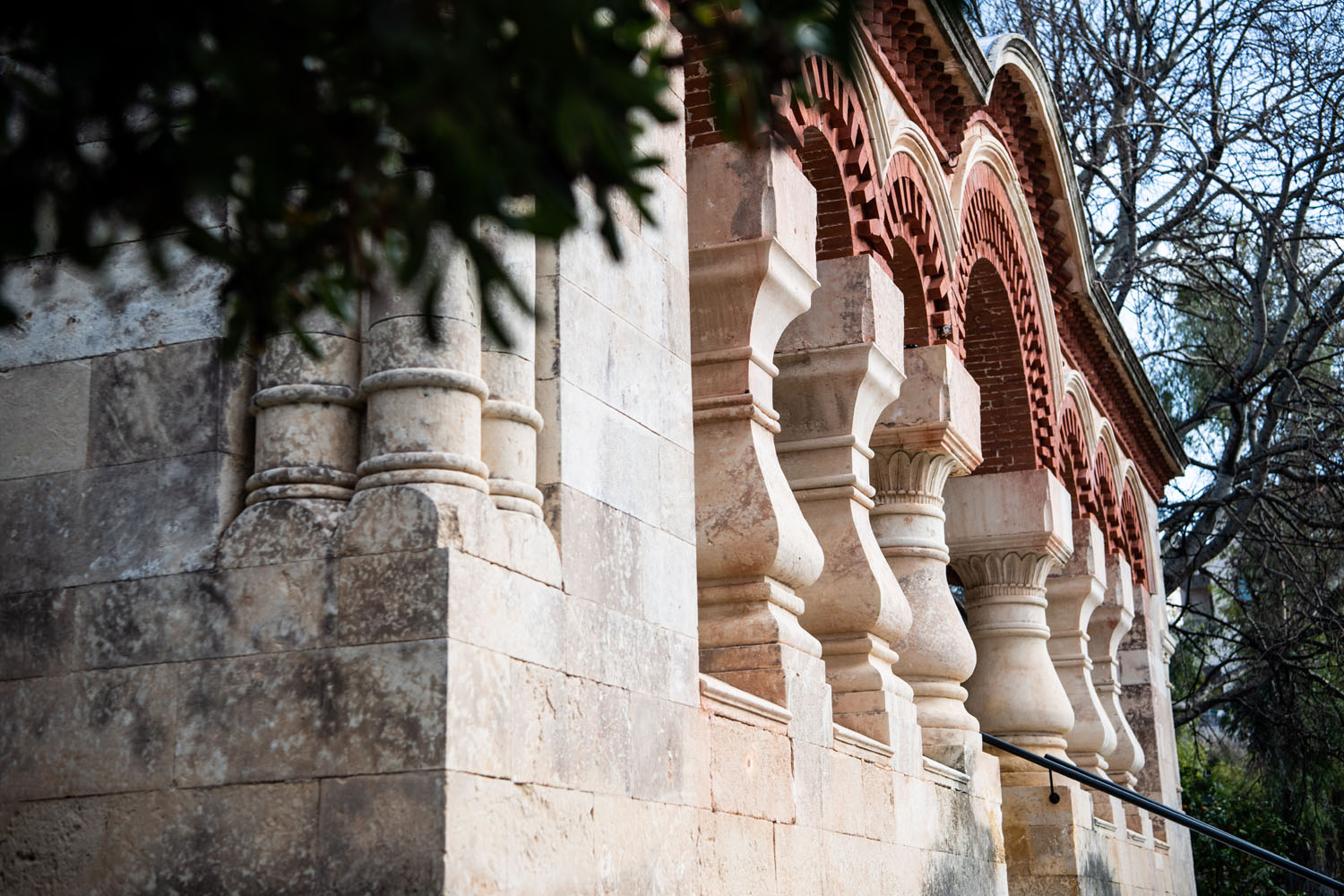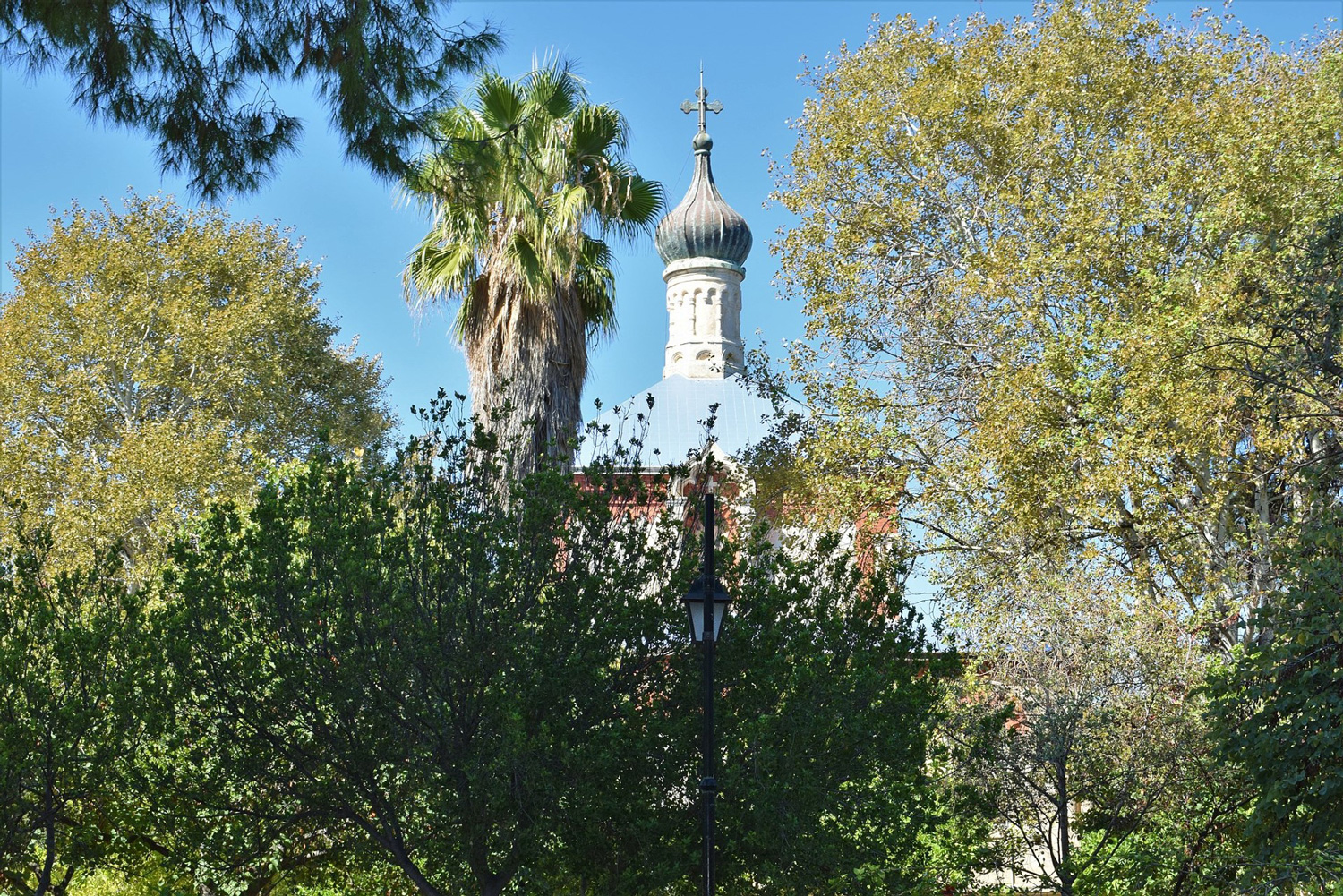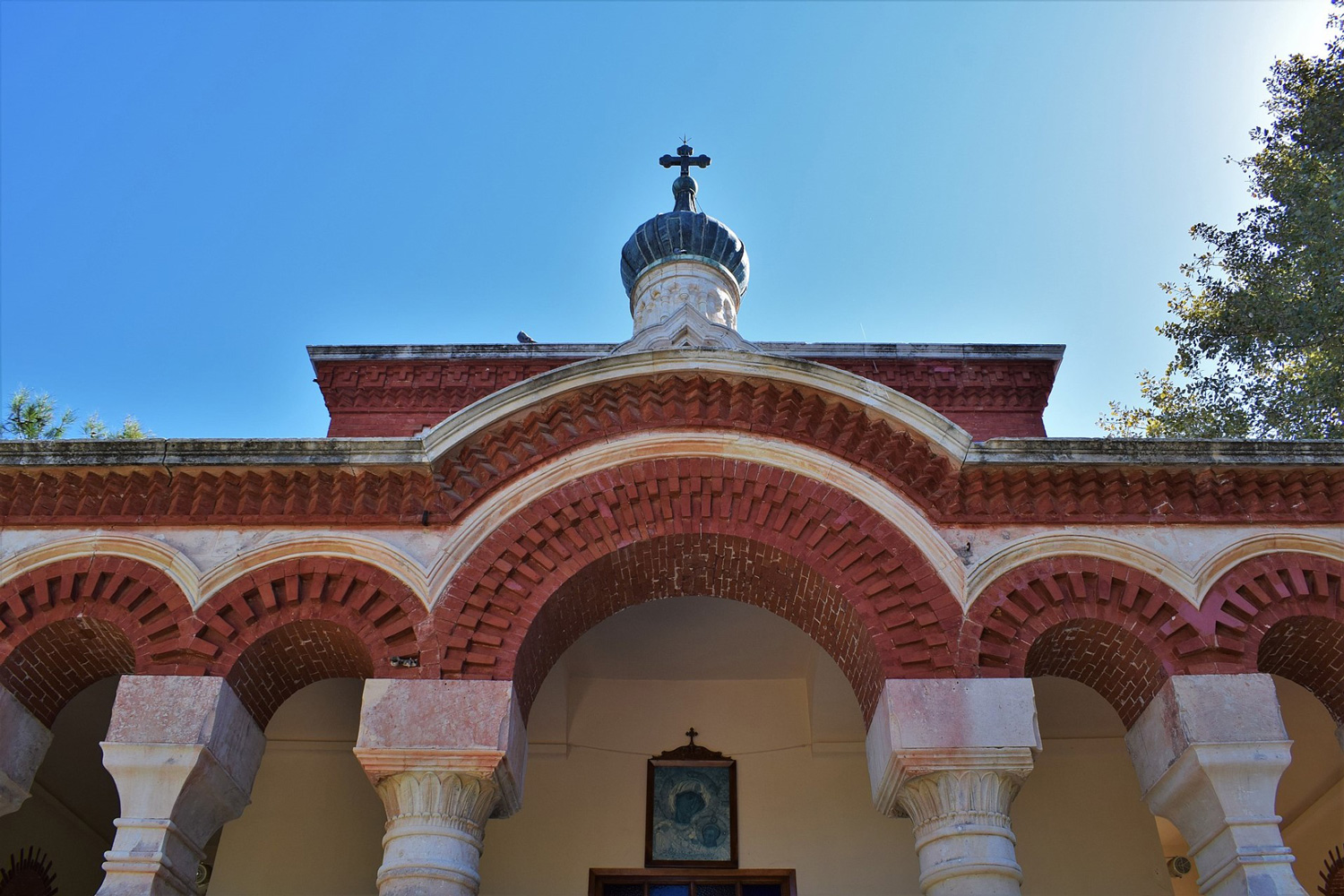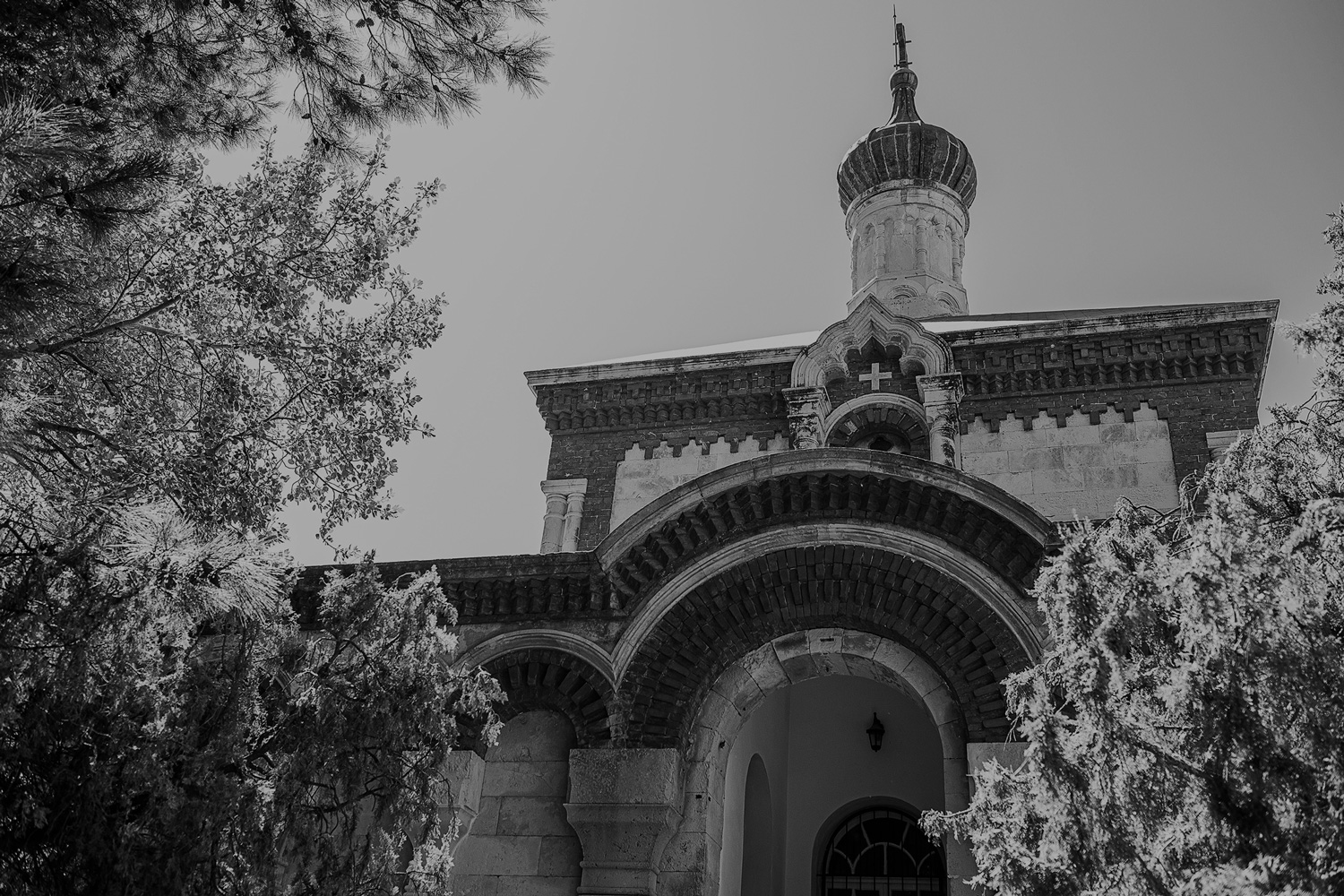
The church of Agia Magdalini (St. Mary Magdalene) is one of the “hidden” from the mainstream Chania city tourist route sights, that you have to look for – and possibly ask the locals – to find it. Thankfully, in this case, it’s really worth any extra effort to do so.
To get to the church, we follow the central Eleftheriou Venizelou street – which goes along the city coastline – east of the center of Chania city, until we reach the historic Chalepa neighborhood. If we turn right to the small Skra street, after a few meters we see it: a small church like no other in Chania city, which is popular to the locals and known as Agia Magdalini.
The yard of the church, as we get into it from the central entrance in Skra street, is really impressive: it is essentially a small, well cared for garden, with a large variety of different tree species. Among them, the tall palm tree stands out.
The church of Agia Magdalini is built according to the Russian Orthodox church architecture, which sets it apart from any other church in Chania city. Its characteristic bell tower is not high and attached to the main building. On the contrary, it is shorter than the church, and lies on the garden next to it.
The main facade of the church, facing the entrance to the yard, has seven decorative arches, one big above its main entrance, and other three smaller on each of its sides. They all have distinctive red brick linings.
On top of the church, instead of a big dome, there is a rectangular roof construction, essentially a smaller storey, with fine artistic details. On top of its blue sloping cover lies a small tall dome, characteristic of the traditional Russian church architecture.
It all started in 1898. That year, Prince George of Greece became High Commissioner of Crete and came to Chania city. His then residence was a mansion across today’s church, which still stands today on Eleftheriou Venizelou street.
When Prince George’s sister, Maria, made an official visit to Chania, her husband, Grand Duke George of Russia, wanted to commemorate her visit for obvious foreign relations reasons. So, he donated 10.000 rubles of the time to his brother-in-law, in order to build in the city a church dedicated to St Mary Magdalene.
The church was built in 1901 right across the residence of Prince George. It was built in the characteristic Russian Orthodox architectural style. The small church lied, just like today, in the middle of a fine garden with a variety of trees.
The church was officially dedicated to Agia Magdalini (St. Mary Magdalene) in 1903. Among the officials that came to Chania for this ceremony was Queen Olga of Greece, the mother of Prince George and Maria, who was of Russian origin.
Agia Magdalini church was used from Prince George to attend mass and organize other religious events. When the prince finally had to leave Crete in 1909, after the historic Therisso revolt that paved the way to the reunion of Crete with the rest of Greece, the church was given to the city of Chania. Prince George, soon after his departure, made a donation to the church to commemorate his 11-year stay on the island.
Today the church remains a silent witness of the historic events that took place in the beginning of the 20th century, which shaped the modern history of Chania and Crete. A reminder of the traditional ties between Greece and Russia, through their then royal families, the church of Agia Magdalini (St. Mary Magdalene) doesn’t fail to surprise today’s visitors with its special architecture, which is unique in Chania city.
